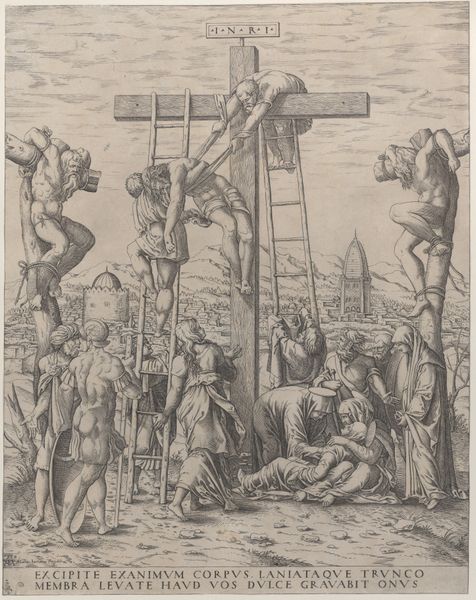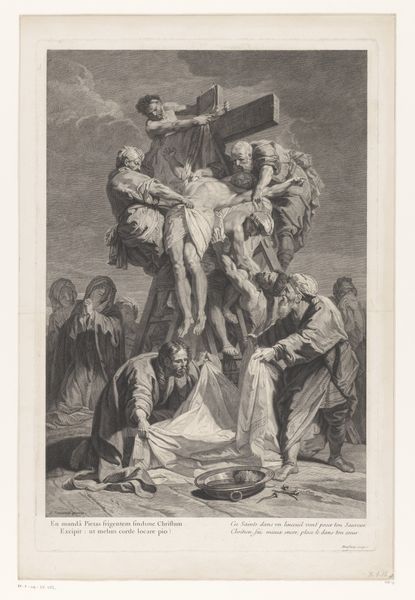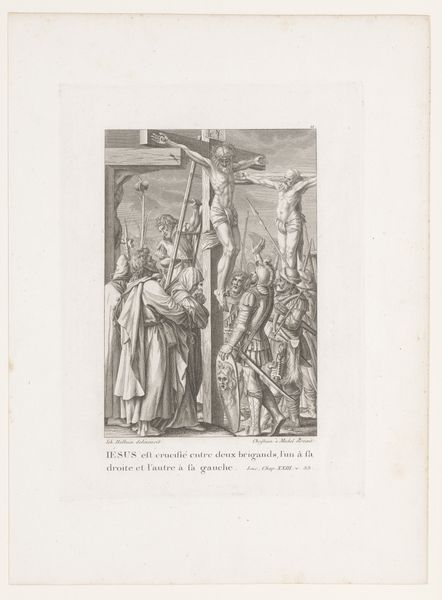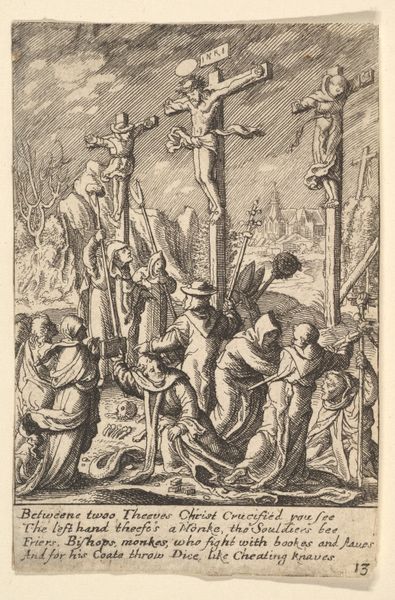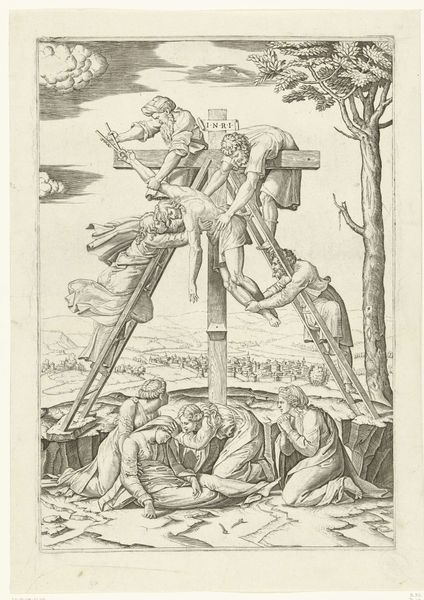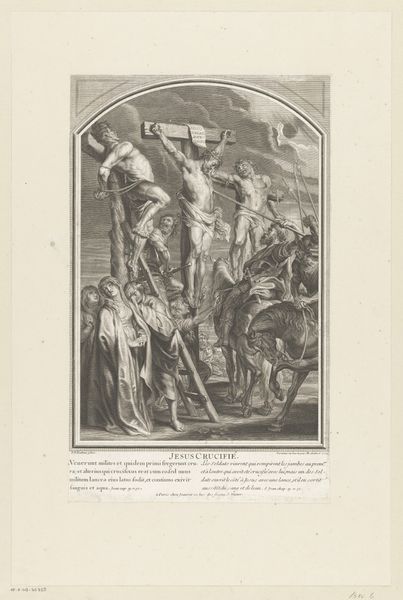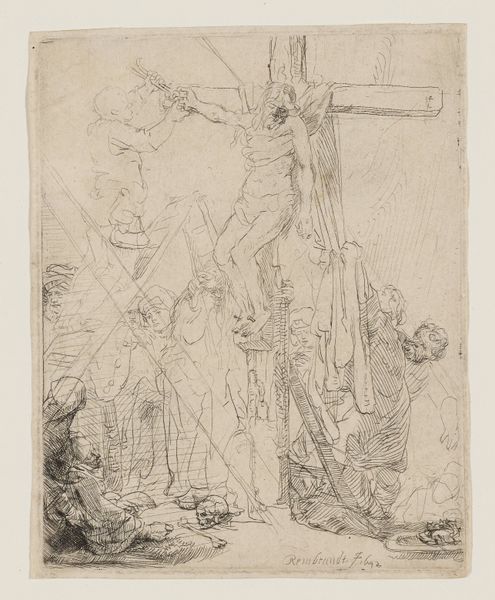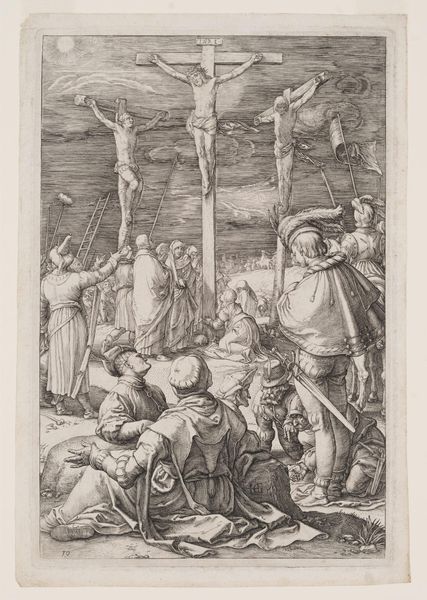
print, engraving
# print
#
figuration
#
11_renaissance
#
history-painting
#
italian-renaissance
#
engraving
Dimensions: height 393 mm, width 324 mm
Copyright: Rijks Museum: Open Domain
Editor: Here we have an engraving titled "Kruisafneming," or "Descent from the Cross," dating from around 1540, by an anonymous artist. The somber mood strikes me, especially the focus on the figures clustered at the base of the cross. How do you interpret this work in the context of its time? Curator: This print provides a potent lens through which we can examine the social and religious upheaval of the Renaissance. Beyond the immediate depiction of Christ's removal from the cross, consider the rise of printmaking itself. How did the proliferation of images like this one challenge existing power structures within the church? What impact did its accessibility have? Editor: It seems like prints democratized religious iconography, enabling wider audiences to contemplate the Passion outside the confines of the church. Curator: Precisely. And that accessibility invariably led to different interpretations and the potential for dissent. Who was being reached through these images? What specific populations may have been particularly impacted? Consider the role of women in the story depicted, for instance. The Virgin Mary is often a focal point in depictions of the deposition. How does that visibility impact the interpretation? Editor: Thinking about the female figures brings a new depth to this artwork. This piece isn’t just about religious narrative, it's a powerful statement on social dynamics and access to religious narratives in Renaissance society. Curator: Indeed. By engaging with this artwork critically, through the lens of gender and class, we see the complex layers of meaning it held, and continues to hold. What does an image like this one reveal about the artist’s intentions versus its social implications, particularly as it circulates within these social, religious and economic power dynamics? Editor: I hadn't considered those broader impacts. It highlights how crucial it is to analyze art in its full historical context, recognizing its potential to be both reflective and subversive. Curator: Exactly, and by engaging art this way, we reveal powerful insights into past and present inequalities, allowing for dialogue and growth.
Comments
No comments
Be the first to comment and join the conversation on the ultimate creative platform.
